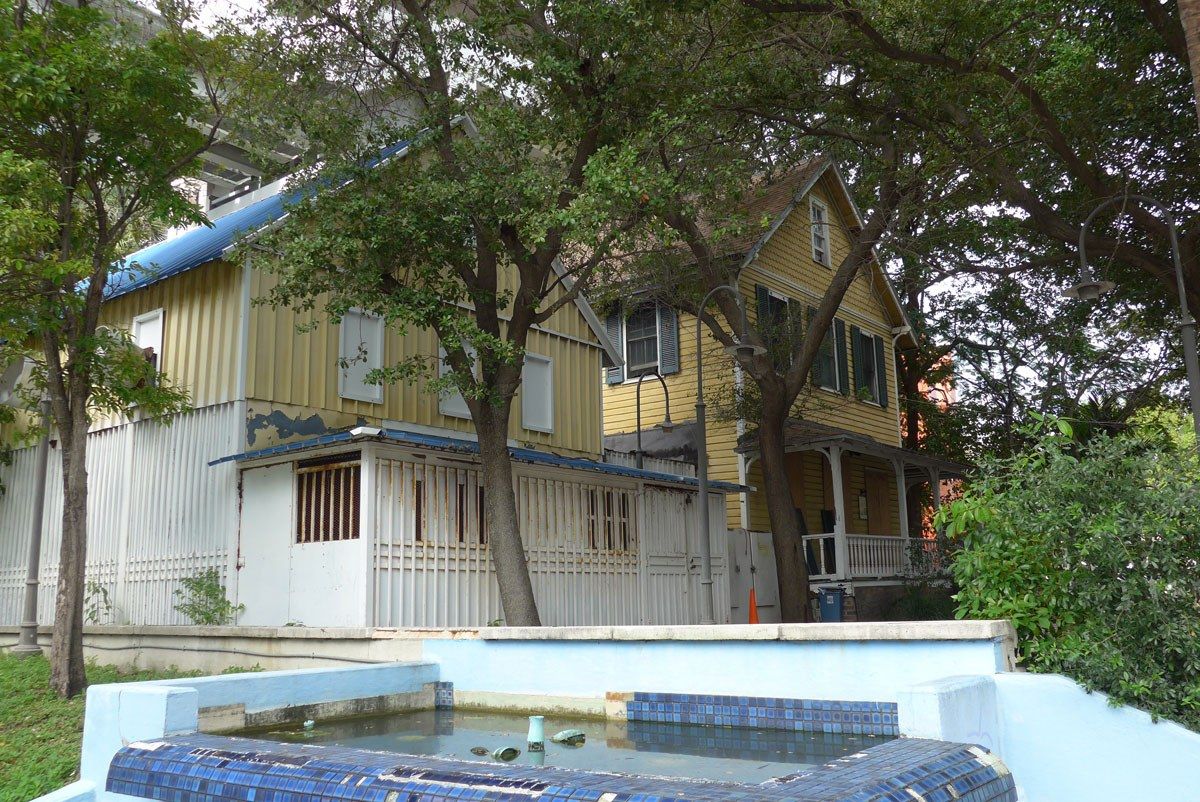Lummus Park Historic District
Highlights
Discover a serene beachfront park in Miami, perfect for relaxing, people-watching, and enjoying scenic walks along the lively promenade.
Discover a serene beachfront park in Miami, perfect for relaxing, people-watching, and enjoying scenic walks along the lively promenade.
"Though Lummus Park is Miami’s oldest park, the two historic structures moved here are even older. They are the only two surviving buildings from Miami’s pioneer era. One is from Fort Dallas and is a Slavehouse that was built by the Slaves of settler William English in 1844 from native oolitic limestone. It was converted to a U.S. Army barracks during the Second Seminole War and was later a part of Julia Tuttle’s homestead after she purchased Fort Dallas. Tuttle is considered, “The Mother of Miami” and is the only female founder of any American city. The other building is William Wagner’s House that he built in the 1850’s. It is a traditional frontier home built of hand-hewn lumber with mortise and tenon joints. Wagner lived in Miami until he died in 1901, was a Veteran of the Mexican War and built the first church in Miami-Dade County. The buildings are not open to the public, but there are basketball courts, a play ground and picnic benches scattered throughout the park." - Hernan Bas & Pete Rozek
"Fort Dallas Park, Miami River. This pocket park used to be the site of Old Fort Dallas, which was named after U.S. Navy Commodore Alexander James Dallas. It was built in 1836 to provide a strategic American military presence during the Seminole Wars. While none of the original structures are still standing, one of the “Palm Cottages” built in 1897 to house the workers of Henry Flagler was moved here in 1983. Flagler is considered “The Father of Miami”, was a major shareholder in Standard Oil Company and railroad tycoon. The park is currently closed for renovations but you’ll see the Palm Cottage from the riverwalk."

"Fort Dallas Park, Miami River. This pocket park used to be the site of Old Fort Dallas, which was named after U.S. Navy Commodore Alexander James Dallas. It was built in 1836 to provide a strategic American military presence during the Seminole Wars. While none of the original structures are still standing, one of the “Palm Cottages” built in 1897 to house the workers of Henry Flagler was moved here in 1983. Flagler is considered “The Father of Miami”, was a major shareholder in Standard Oil Company and railroad tycoon. The park is currently closed for renovations but you’ll see the Palm Cottage from the riverwalk."

"Fort Dallas Park, Miami River. This pocket park used to be the site of Old Fort Dallas, which was named after U.S. Navy Commodore Alexander James Dallas. It was built in 1836 to provide a strategic American military presence during the Seminole Wars. While none of the original structures are still standing, one of the “Palm Cottages” built in 1897 to house the workers of Henry Flagler was moved here in 1983. Flagler is considered “The Father of Miami”, was a major shareholder in Standard Oil Company and railroad tycoon. The park is currently closed for renovations but you’ll see the Palm Cottage from the riverwalk."

"Fort Dallas Park, Miami River. This pocket park used to be the site of Old Fort Dallas, which was named after U.S. Navy Commodore Alexander James Dallas. It was built in 1836 to provide a strategic American military presence during the Seminole Wars. While none of the original structures are still standing, one of the “Palm Cottages” built in 1897 to house the workers of Henry Flagler was moved here in 1983. Flagler is considered “The Father of Miami”, was a major shareholder in Standard Oil Company and railroad tycoon. The park is currently closed for renovations but you’ll see the Palm Cottage from the riverwalk."

Jacqueline Stephen
Eduardo Nunez
Viviana Mucarzel
SheGabigains
Lenny Mauricio
No One
Jimmy Ordell
Myrna Perez